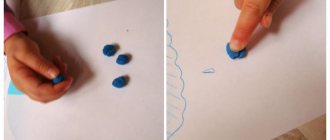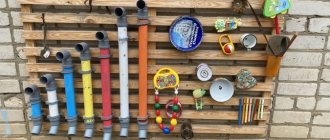Preparing for sculpting
Before you start learning how to make animals from plasticine, you should take care of preparing your workplace. The surface of the table at which modeling will be done should be well lit. In addition, you should protect your workplace from plasticine. It is for such purposes that special boards are used. But if you don’t have one, you can simply cover the table with a piece of oilcloth so as not to get it dirty. For kids, you can stock up on various shaped molds, and then sculpting animals from plasticine will become an even more exciting activity. You can also purchase special gloves for handles so that the plasticine does not rub into the skin during work.
Funny animals from the zoo: monkey, snake, sloth
You can create your own zoo from ordinary plasticine. A variety of forest, wild and domestic animals will happily settle in it. Modeling will bring a lot of fun, and the made figures will be excellent toys for kids.
How to make a monkey: step-by-step instructions
An unusual monkey is made from brown and yellow plasticine mass.
It is molded according to the following scheme:
- Prepare a part for the head from a brown mass and a couple of small yellow elements to form the face.
- Attach yellow cakes to the head, placing them as closely as possible to each other.
- Draw eyes, mouth, nose and wrinkles in a stack.
- Make ears.
- Make a body in the shape of an egg and stick a yellow cake to it.
- Using a match, connect the body to the head.
- Make four long tubes from the brown mass.
- Attach yellow circles to each of the tubes and make cuts on them in a stack.
- Attach the monkey's limbs to the main part.
Monkeys come in different colors
Finally, attach a long tail to the animal.
Snake: sculpting in stages
A very realistic snake is made according to the following instructions:
- Roll the plasticine mass into a sausage of the required length.
- Select the head, giving more volume in this place.
- Draw the eyes and nostrils.
- Make slits along the entire back in a stack - you get scales.
- Attach a long red tongue to the front of the head.
- Bend the snake's body.
You can apply an additional pattern to the snake's body
Tip: to make the snake's body flexible, you need to lay wire inside.
How to make a sloth from plasticine
Sculpting a sloth comes down to the following steps:
- Form the head and body of the animal.
- Sculpt the paws and claws.
- For the future face and tummy, roll into balls and flatten them into flat cakes.
- Make eyebrows in the shape of droplets.
- Make eyes and a nose from small pieces.
- Assemble all the design details together.
- Draw a mouth in a stack.
Making an octopus: step-by-step instructions
The octopus is one of the most unusual inhabitants of the seas
. Naturally, the process of sculpting it has its own characteristics, but it does not cause any difficulties. Following step-by-step instructions, even a small child can cope with this task.
The octopus is one of the most unusual inhabitants of the seas
Progress:
- Make a small circle and eight long sausages - you get a head and paws.
- Place bright circles on each paw.
- Connect the head with the paws.
- Bend each limb.
- Use a toothpick to squeeze out the mouth.
- Blind the eyes and glue them to the head.
Place a small object into the tentacles.
We sculpt wild animals step by step
Wild animals are of particular interest to children, since not everyone gets to meet them in real life. We have to be content with their depiction in the pictures. That is why sculpting a lion cub from plasticine will not only be exciting, but also educational.
Wild animals are of particular interest to children, since not everyone gets to meet them in real life.
Work progress step by step:
- Make a circle from the yellow mass and attach a couple of small parts to it, forming the cheeks of the animal.
- Make a nose out of brown material and secure it between the cheeks.
- Attach eyes a little above the cheeks.
- Make a teardrop-shaped body and slightly extend the tip of this piece.
- Using a match, connect the head to the body.
- Form a lot of brown circles from brown material and fix them on the animal’s head - you get a mane.
- Now mold the paws and stick three small orange circles on each of them.
- Attach these parts to the body.
Make a yellow ponytail with an orange tassel at the tip and stick it to the craft.
GCD move:
Educator: Guys! Do you know who came to visit us today?
The teacher pulls out a big hedgehog
. The children gather in the middle of the room.
The children answer.
Educator: Hedgehog
!
Children looking at a hedgehog
.
Educator: Guys, hedgehog
came to us from the forest. He lives in the forest.
Educator: He is friends with bears, bunnies, and squirrels. And he is afraid of the wolf and the fox. When he sees danger, the hedgehog curls up into a prickly ball and no one can touch him.
Educator: What does he like to eat? The children answer.
Educator: Hedgehog loves mushrooms
, apples, pears and milk
Educator: At home, the hedgehog drinks milk. In winter, the hedgehog sleeps in his hole. That is, in your house.
Educator: Guys, you can’t offend animals. We must love them and treat them with reverence. Look how sad the hedgehog is
.
Let's cheer him up. Children's answers The teacher reads a poem, and the children repeat after him
The hedgehog stomped along the path
And he carried mushrooms on his back (walking in place)
The hedgehog stomped slowly
Quietly the leaves rustle
(we rustle with our palms)
And a bunny gallops towards us,
Long-eared one, jump around.
Something clever in the garden
I got hold of a sideways carrot (jumping in place)
.
Educator: Guys, I invite you to the table. Children sit at tables where there are blanks with the image of a hedgehog without needles
. –
Educator: These are the pictures with the image of a hedgehog lying in front of you
.
Consider the hedgehog. Oh! He's kind of weird! The hedgehog is missing something
. Children's answers.
Educator: That's right, there are no needles! Let's quickly give the hedgehog some needles
!
Like this! The teacher shows how to make hedgehog needles. The teacher invites the children to make plasticine balls for needles: pinch off small pieces of plasticine with the thumb and forefinger of their right hand and roll them into balls. Children roll 2-4 balls each (the rest of the balls are prepared in advance)
.
Then invite the children to place a plasticine ball over the outline of the hedgehog's
, press it with their finger and pull their finger down.
Educator: It turned out to be a needle! Let's give the hedgehog a lot of needles
!
on a hedgehog
. Children and teacher make needles. The teacher helps those who are not doing well. When the work is ready, everyone admires their pictures and the pictures of their comrades.
Educator: Now I suggest you turn into hedgehogs. The teacher shows the kids how to draw a hedgehog
, clasping your fingers together.
The teacher reads a poem, and while reading, the children repeat
the teacher’s movements.
The little hedgehog is frozen
(press your fingers -
the hedgehog removes the needles )
And curled up into a ball.
The sun warmed the hedgehog
(Straighten your fingers -
the hedgehog showed the spines )
The hedgehog turned around
.
The teacher praises the children for their work and says that we will place our hedgehogs at the exhibition so that they will please us and their parents.
Educator: And now it’s time to say goodbye to our hedgehog
, he goes back to his forest.
Children say goodbye to the hedgehog
.
Educator: Guys, we helped make the hedgehog
?
Did you help the hedgehog?
How did we help him?
Publications on the topic:
Notes on sculpting in the second junior group “Who visited us in our garden?” Integration of educational areas: “Cognition”, “Reading fiction”, “Artistic creativity”, “Communication”, “Socialization”.
Abstract of GCD in the second junior group for modeling "Owl" Educational area: Artistic and aesthetic development Integration of educational areas: Artistic, aesthetic, cognitive,.
Abstract of educational activities for modeling in the second junior group “Multi-colored balls for a hedgehog” Integration of educational areas: “Cognitive development”, “Artistic and aesthetic development”. Objectives: 1. Educational: - teach.
Tasks. Develop plot-game concept and imagination. Make chicken figures from individual lumps. Using pulling and pinching techniques.
Program content: Learn to convey the shape of an object (sparrow, divide plasticine into two unequal parts, learn to fasten two parts in order to...
Notes on object modeling in the second junior group “Gift for Dad” Purpose: to make a gift for Dad (tie). Objectives: Educational: Reinforce modeling techniques: develop the ability to separate a piece of plasticine.
Plasticine is a magical material with which you can make incredibly beautiful figures. These can be fairy-tale and cartoon characters, buildings and plants. Animals made from plasticine deserve special attention. For children, modeling will be an incredibly exciting and educational activity, from which it is impossible to escape for a minute.
Plasticine is a magical material with which you can make incredibly beautiful figures.
Sea inhabitants made from plasticine turn out to be extraordinarily beautiful.
Even a child can make such crafts with his own hands. Making a crab requires just a little attention and patience.
Sea inhabitants made from plasticine turn out to be extraordinarily beautiful
Sequencing:
- Make blanks for the body, a pair of claws and eight legs.
- The largest ball from which the body will be made needs to be pressed down a little.
- To make the paws, make sticks from eight blanks.
- Attach four tabs on one side and four more on the other.
- Form claws from the two remaining blanks and attach them to the crab's front legs.
- Place small circles of a lighter material on the body.
- Make eyes.
How to choose the right plasticine
Plasticine is different from plasticine. In order for the work process to bring only pleasure, you need to choose the right plasticine. If you will be modeling with children, it is better to choose a plasticine substitute. This is a special mass for modeling that does not need to be kneaded before use. It also has pleasant fruity scents. This mass is completely incapable of harming a child, even if he decides to chew it.
Its only drawback is that it dries quickly when exposed to air. For older children, you can completely use regular plasticine. It comes in soft, hard and medium soft. Soft plasticine does not hold its shape for long and collapses under the influence of its own weight, while hard plasticine is practically impossible for a child to knead. It follows from this that medium-soft plasticine is best suited for modeling. It is better not to use hard plasticine when working with children.


